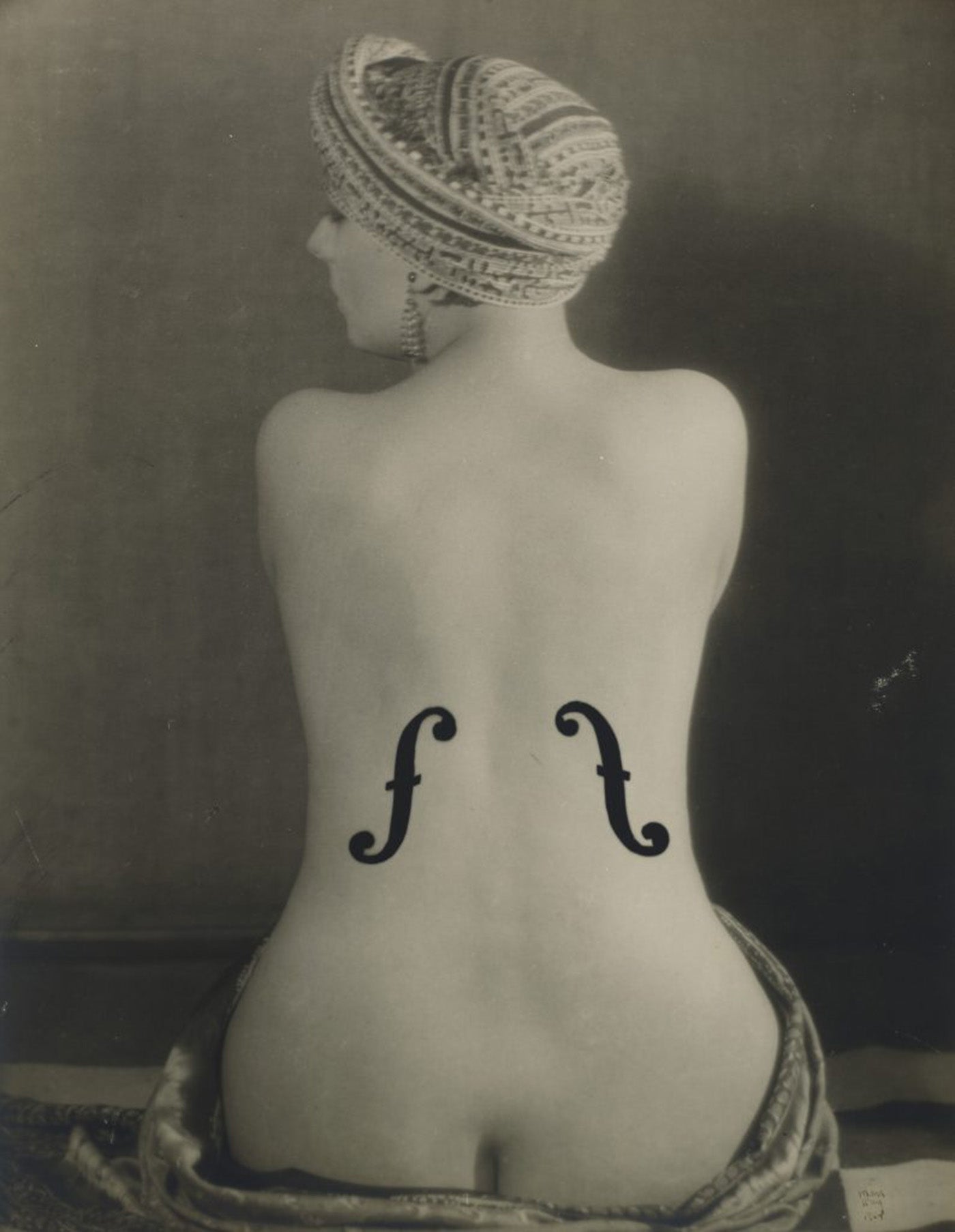
In confirmation of a growing interest in Surrealism, Man Ray’s photograph, “Le Violon d’Ingres,” brought in a whopping $12.4 million over the weekend at Christie’s New York showroom, more than $5 million over the projected valuation.
The piece is a part of the collection, “The Surrealist World of Rosalind Gersten Jacobs and Melvin Jacobs,” which collectively garnered just over $42 million from the auction. Ray’s work showed up alongside that of Rene Magritte, Max Ernst, Dorothea Tanning, and Marcel Duchamp, among others in the couple’s collection. The Jacobs made their name (and fortune) as successful fashion retailers and befriended many Surrealists during the ‘50s and ‘60s.
The sale of “Le Violon d’Ingres” makes it the most expensive photograph ever sold at auction. It trumps “Rhein II” by German photographer Andreas Gursky, which sold for $4.3 million in 2011.
“Photography has been the invention and medium quietly underpinning and influencing much of the art and popular culture of the 20th century,” Darius Himes, Christie’s International Head of Photographs told Artlyst. “ Long seen as an icon of 20th-century art, this purely photographic work is truly unrivaled and, appearing on the market for the very first time in its history, has now smashed all records for any photographic piece at auction, vintage or contemporary, as well as all Man Ray auction records in any medium.”
What is the Violon d’Ingres?
The famous photograph depicts actress, singer, and model Kiki de Montparnasse with “F-holes” running down her back in an evocation of the curves of a violin.
The title of the image is a reference to Jean-August-Dominique Ingres, a French neoclassical painter, who was also known to play the instrument. Thus, the phrase “violon d’Ingres,” is used in reference to an artist’s secondary hobby.
“Le Violon d’Ingres” could have also been seen as a play on the fact that de Montparnasse was both Ray’s lover and model.
“Surrealism as an artistic movement has seeped into our consciousness over the course of 100 years now, and no work more so than Man Ray’s Le Violon d’Ingres,” Himes told Artnet News. “There are no other photographs that have proven to have the lasting power and playful eroticism that define the Surrealists of the 1920s. It ranks among the most influential works of art—let alone photographs—of the 20th century.”
The gelatin silver print was made directly in the darkroom, with the violin marks having been burned on via overexposure. It is one of just two in existence—the other resides at the Centre Pompidou in Paris.
Who is Man Ray?
Born Emmanuel Radnitzky in 1890, Man Ray moved to Paris in 1921, and remained there all his life, with a brief interlude in Los Angeles during World War II. He moved in the same circles as Ernest Hemingway, Gertrude Stein, Salvador Dali, and Picasso—to name just a few.
Though he is best known for his manipulated images and avant-garde photography, Ray was also a filmmaker, painter, and object artist. He worked with photograms, which he dubbed “rayographs,” in which a subject was exposed in front of a piece of photo paper, with no camera used. The resulting images were a study of light and shadow.
The post At $12.4 million, Man Ray’s ‘Le Violon d’Ingres’ is now the most expensive image ever sold at auction appeared first on Popular Photography.